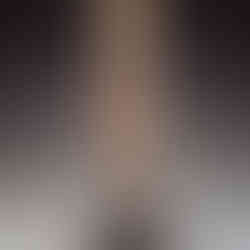Spotlight Artwork: Africa: Djenné Terracotta Seated Figure - Mali Empire
- Jeff Hall
- Jan 29, 2023
- 2 min read
Updated: Feb 5, 2023


Among the earliest known examples of art from sub-Saharan Africa are terracotta figures like this one from the inland delta of the Niger River, near the present-day home of the Dogon and Bamana peoples.
In this region of Mali, the ancient city of Jenne-jeno (“Old Jenne”) flourished as a center for agriculture, trade, and art from the middle of the first millennium until about 1600. The terracotta figures associated with this civilization represent men and women, singular and in pairs, in a variety of attire and
poses, including sitting, kneeling, and on horseback. The diversity of imagery and the skill with which they were modeled reveal the rich sculptural heritage of a sophisticated urban culture.
This figure sits, hunched over, with both arms clasping an upraised leg, its head tilted sideways to rest against its bent knee. The posture evokes a pensive attitude that is reinforced by the expressiveness of the facial features: the bulging eyes, large ears, and protruding mouth are all stylistically characteristic of works from this region.
Thermoluminescence tests (a geological method used for dating, especially objects made of clay) indicate that this figure was fired during the first half of the thirteenth century. Other terracotta figures recovered (and, in many cases, looted) from various sites throughout the Inland Niger Delta have been dated from the thirteenth to the sixteenth century. Artists—either men or women—modeled the figures by hand, using clay mixed with grog—crushed potsherds (a piece or fragment of earthenware or pot that is made of fired or baked clay). Details of dress, jewelry, and body ornament were either added on or incised. Once complete, the work was polished, covered with a reddish-toned clay slip, and then fired, probably in an open-pit kiln.
The surviving figures vary in style and subject matter, suggesting that the sculptors had considerable artistic freedom. Our understanding of the use and meaning of such works remains speculative. A few controlled archaeological digs have revealed similar figures that were originally set into the walls of houses. Oral history collected recently in the region supports the archaeological evidence, as the figures are said to have been venerated in special sanctuaries and private homes. There is little consensus, however, on the meaning of the various forms of the terracotta figures. Scholars have suggested that this figure conveys an attitude of mourning. Its seated pose, shaved head, and lack of dress recall mourning customs still practiced by some in this region of western Africa.
By Dr. Christa Clarke, for The Metropolitan Museum of Art, New York
(exerpt from https://www.khanacademy.org/humanities/art-africa/west-africa/mali1/a/seated-figure-djenn-peoples)
Links
Gallery
Videos
Essential Questions Read the above text and watch the video prior to answering these questions.
What does the seated figure represent?
What is the figure made out of? Why do you think this is important?
What is the significance of Djenné?
How does the simplification and exaggeration of these figures impact your opinion of it.





































Comments